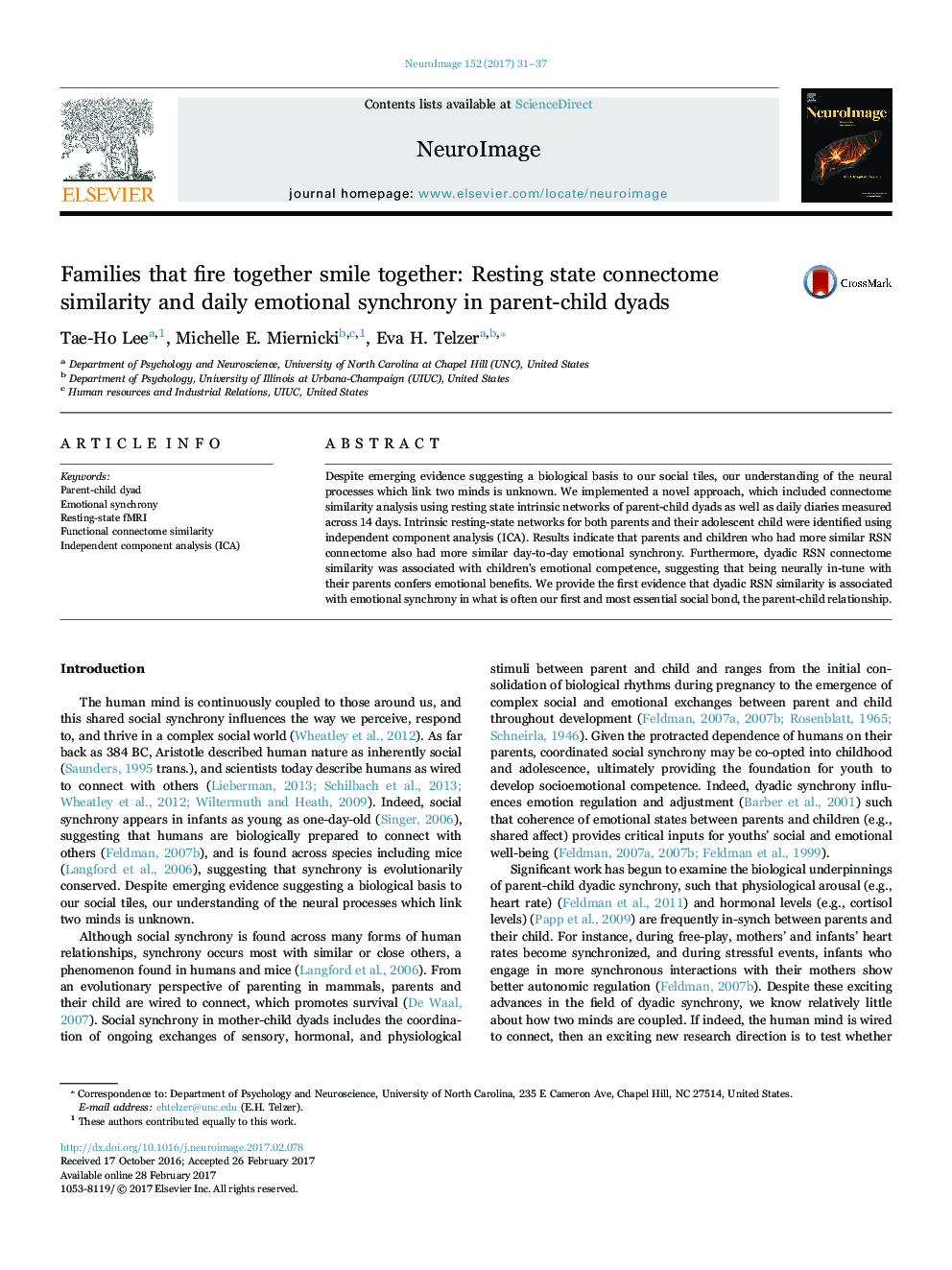| Article ID | Journal | Published Year | Pages | File Type |
|---|---|---|---|---|
| 5631174 | NeuroImage | 2017 | 7 Pages |
â¢Examined a link between neural and behavioral concordance in parent-child dyads.â¢Parent-child dyads with more neural concordance show higher behavioral concordance.â¢Dyadic concordance enhances children's emotional competence.â¢Being in-tune with parents confers developmental benefits for youth.
Despite emerging evidence suggesting a biological basis to our social tiles, our understanding of the neural processes which link two minds is unknown. We implemented a novel approach, which included connectome similarity analysis using resting state intrinsic networks of parent-child dyads as well as daily diaries measured across 14 days. Intrinsic resting-state networks for both parents and their adolescent child were identified using independent component analysis (ICA). Results indicate that parents and children who had more similar RSN connectome also had more similar day-to-day emotional synchrony. Furthermore, dyadic RSN connectome similarity was associated with children's emotional competence, suggesting that being neurally in-tune with their parents confers emotional benefits. We provide the first evidence that dyadic RSN similarity is associated with emotional synchrony in what is often our first and most essential social bond, the parent-child relationship.
